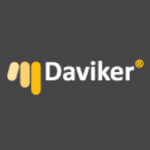 How can you improve contact centre call quality monitoring without spending all of your time listening in on your call operators’ conversations?
How can you improve contact centre call quality monitoring without spending all of your time listening in on your call operators’ conversations?
It’s a dilemma faced by many contact centre managers, and when you have a large number of operators all making frequent calls, it can be difficult to give enough time to monitoring each of them.
The solution is to automate the process, so you have software listening in on calls when you cannot monitor them directly yourself.
And in fact, the benefits of speech analytics software could mean that you no longer need to monitor calls directly, unless the system flags up a cause for concern.
What is speech analytics?
Speech analytics is a form of call centre call quality monitoring that works by keeping a close watch on every moment of every call made by every operator – something that would be impossible to do manually.
It works in real time, so there’s no need to wait for reports to be compiled, and you get an instant alert if evidence of non-compliance is detected.
You can look back through past calls to mine for historical trends, as well as automatically scoring calls and ranking the performance of your call centre agents.
How does it work?
Speech analytics software works in several ways, but the main methods are:
1. Detect emotionally charged conversations, which are likely to be inappropriate in a professional contact centre environment.
2. Detect specific words and phrases, which you may want to feature in every call, or specifically avoid using due to negative connotations.
3. Detect generally positive and negative language, so you can identify your most positive-sounding agents and operators.
Calls can be scored and compared against key performance indicators; if a call does not stack up against the KPIs, it can be referred for manual monitoring to determine what went wrong.
Calls and Continuing Professional Development
Speech analytics software is not about identifying poorly performing operators for the sake of punishing them; instead, it can be used to provide support and training where it is needed most.
Your best employees gain the satisfaction of having been independently verified as doing a good job.
And your ‘worst’ employees have clear goals and areas for improvement, based on unequivocal data.
In this way, your whole facility can be guided towards greater success – and that not only means that your call centre call quality monitoring is improved, but that there should be fewer problems identified as time goes on as well.




